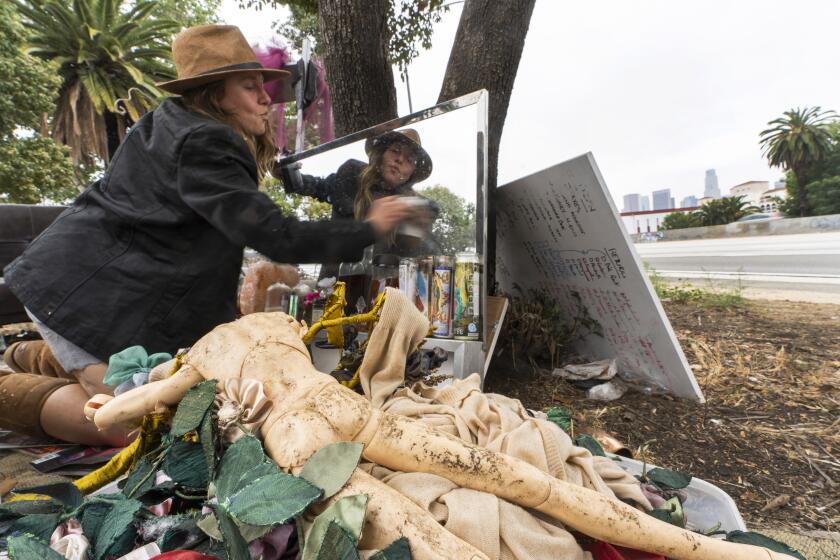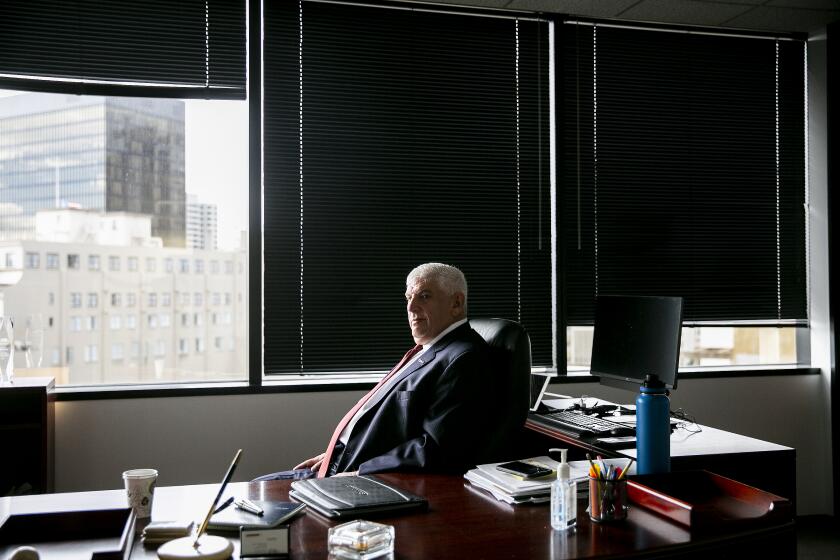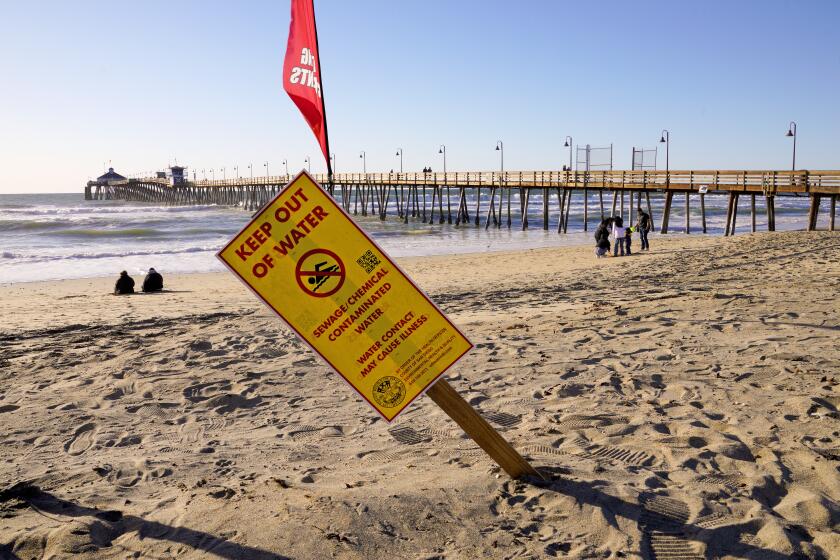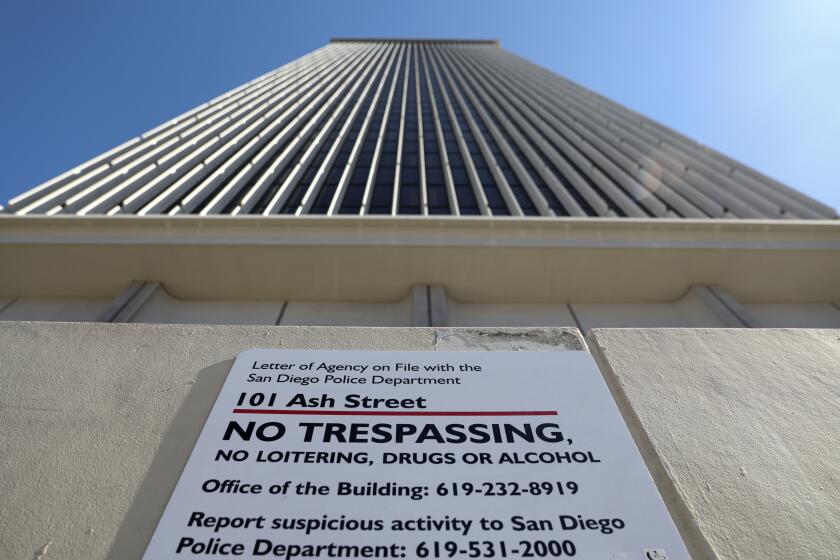Editorial: After Ash Street fiasco, Kevin Faulconer can’t be trusted to fix San Diego’s real estate woes
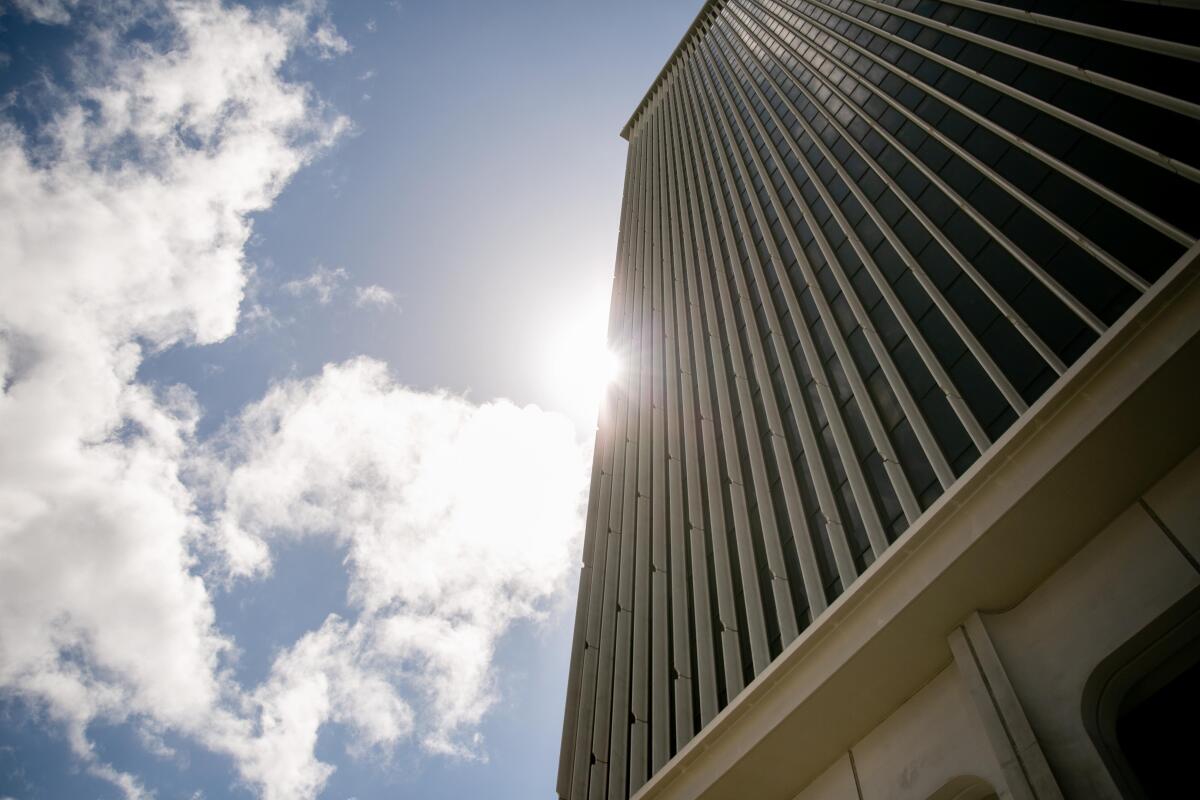
Taking the seller’s word for it that a costly office tower is in good shape is unimaginable
San Diego’s history of City Hall incompetence over the past 25 years is impossible to exaggerate. Twice intentionally underfunding worker pensions. Guaranteeing the Chargers that city taxpayers would pay for tickets if the team sold fewer than 60,000 at home games. Proposing and persuading voters to ratify a pension reform measure — that a state agency warned was illegal because it ignored collective bargaining requirements — and which the California Supreme Court later found to be flawed. Secretly installing streetlight surveillance cameras.
Now a comprehensive preliminary audit of the city’s 2016 agreement to enter into a 20-year, $127 million lease-to-own deal of the former Sempra Energy headquarters, a 19-story office building at 101 Ash Street, offers what may be the worst example yet of incredibly bad dealmaking. When Mayor Kevin Faulconer persuaded the City Council in 2016 to approve the deal, members were told the $535,000 monthly lease was a bargain that would save the city $44 million in rent payments over two decades. They were also told that the 315,000-square-foot building was in good shape and that not much work beyond a $10,000 power wash would be needed before more than 1,000 city employees could move in.
Turns out it’s the taxpayers who got soaked.
As the audit found, the city did no due diligence to establish the condition of the high-rise. Instead, incredibly enough, it accepted the characterizations of Cisterra Partners, a San Diego real estate firm that acted as a broker between the city and the building’s former owners. It did so, the audit noted, despite the most obvious warning sign imaginable: Cisterra had “insisted that the city accept the property ‘AS-IS, WHERE-IS, WITH ALL FAULTS’ and included strong exculpatory language in the lease agreement precluding any liability of Cisterra.”
The city also appeared unaware of another giant warning sign: the 2014 testimony to the California Public Utilities Commission by James Seifert, a real estate consultant for Sempra Energy. He said Sempra considered the building to be “functionally obsolete” because of its vulnerability to damage during an earthquake and because of its asbestos issues.
Talk about foreshadowing. Since early 2017, the city has been spending $18,000 a day on the lease for a building that it has only occupied for several weeks starting last year. And the Faulconer administration now estimates that it would cost $115 million to make the building usable and fix both the asbestos contamination contractors documented in 2017 and myriad subsequently discovered problems with plumbing, heating, elevators, electrical, fire alarm and other systems. That’s a far cry from $10,000.
Forging ahead is one of five options for the building that the administration presented to an angry City Council at a Thursday meeting. Some council members have expressed interest in “walking away” from the lease, another of the five options. Council member Vivian Moreno called the deal “a deliberate fraud.” Several talked of suing Cisterra for bad faith.
But the preliminary audit obtained by NBC 7 San Diego has more bad news than was initially revealed. It said because Cisterra had never actually used the building, that weakened the argument that the firm concealed knowledge of problems during negotiations. What an immense, avoidable disaster.
Faulconer told The San Diego Union-Tribune Editorial Board this week the debacle was “inexcusable” and he was “pissed” that “so many mistakes were made.” Instead of taking complete responsibility, though, the mayor and his aides emphasized that the City Council and City Attorney’s Office didn’t raise questions about the Ash Street deal. He said the buck stops with him, but he alternately blamed “the bureaucracy,” “the system” and “the city.” Now Faulconer is touting a plan that would rely on outside expertise to ensure better management of the city’s 1,600-plus properties and to avoid a repeat of what is the worst land deal in city history.
It is difficult to see this as more than an exercise in damage control for two reasons. The first is Faulconer already raised the issue of the city’s need to do better on real estate matters in 2014 when he hired Cybele Thompson, a veteran real estate professional, to manage city property and leases. She resigned after the release of the preliminary audit.
The second is that the mistakes the city made during its 2016 negotiations weren’t the result of a con job by a slick seller. Instead, it was Faulconer’s failure to take the most fundamental step in considering any real estate transaction: getting an independent evaluation of the property’s condition. Taking the seller’s word in a $127 million transaction is an act of staggering stupidity and irresponsibility.
If the mayor wants to recommend reforms, that’s fine. But the new mayor elected in November should work with the City Council on how to fix real estate management. Literally no one in San Diego has less credibility on the subject than Kevin Faulconer.
Get Essential San Diego, weekday mornings
Get top headlines from the Union-Tribune in your inbox weekday mornings, including top news, local, sports, business, entertainment and opinion.
You may occasionally receive promotional content from the San Diego Union-Tribune.

